By Dan Weisz
People in Tucson who have hummingbird feeders are used to seeing other things trying to steal nectar during the day. Gila Woodpeckers, Verdin, ands and bees try to sneak drinks of the sweet liquid. But for those of us who live near the Foothills and beyond, our hummingbird feeders are now being drained nightly. They are providing sustenance to two species of nectar feeding bats at this time of year. The most prominent of them are Lesser Long-Nosed Bats. With the help of some nice technology and Steve Vaughan, a friend and excellent photographer, I’ve gotten some really wonderful photos of these bats!
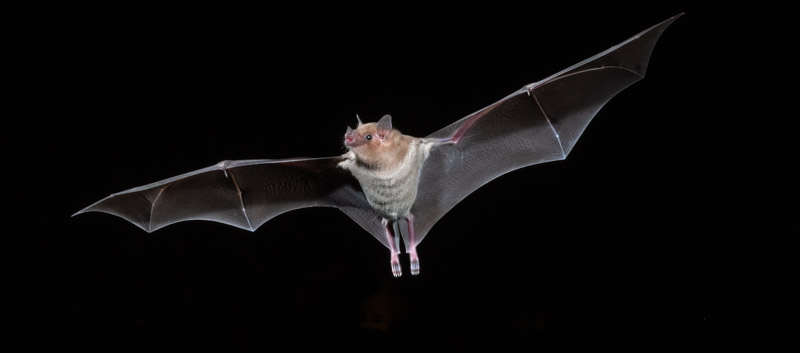
Bats are mammals and the only mammals that can fly! Arizona is home to 28 species of bats, 26 of whom are insect eaters. Two species are nectar feeders including these Lesser Long-Nosed Bats. Their primary food sources are the flowers and fruit of saguaro, organ pipe cactus, cardon, agave, and similar plants. They cannot hover like hummingbirds do so their technique is to fly upwards towards the food, pausing at the food source to slurp up the food, and then fly away as they fall off.
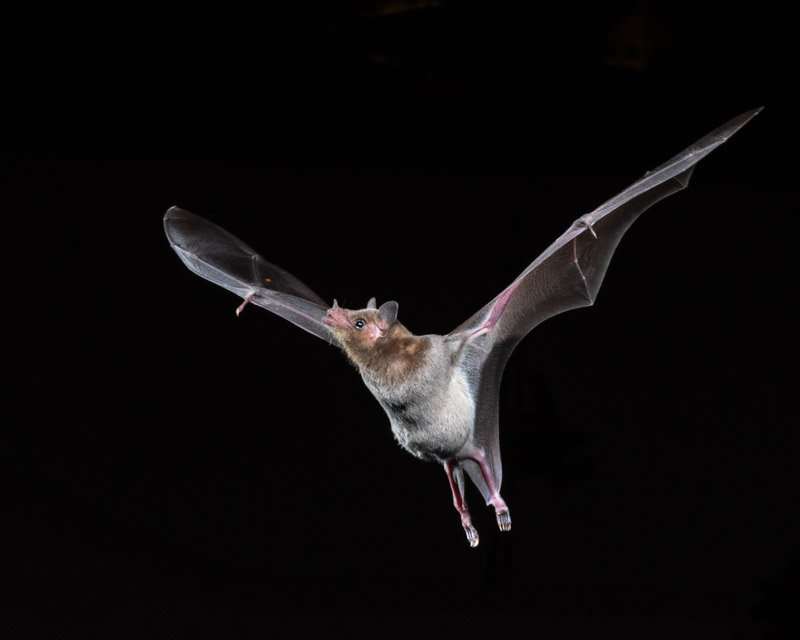
The tongue of a Lesser Long-Nosed Bat is very long and has adaptions for lapping up the nectar from the deep, big flowers they feed on. This bat has just fed and is flying away, “licking its chops” and appearing very happy!
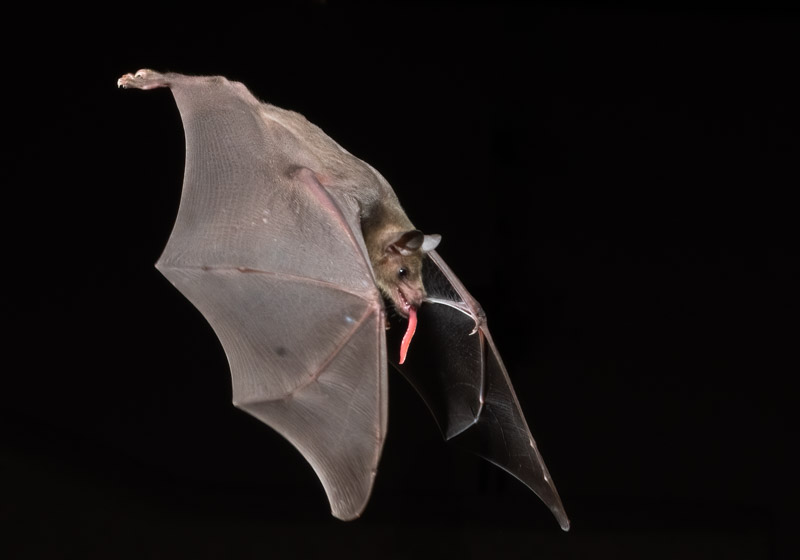
The large wings of the Lesser Long-Nosed Bats are made up of a thin membrane that stretches between their five fingers. You can see their thumbs sticking up and out from the top center of their wings. The very long finger bones then are connected by a thin expanse of skin. It’s often hard to see the finger closest to the thumb but the others are all very distinct. The scientific name for bats is Chiroptera, which is Greek for “hand wing.” On its back you can see the bat’s fur, a characteristic of mammals.
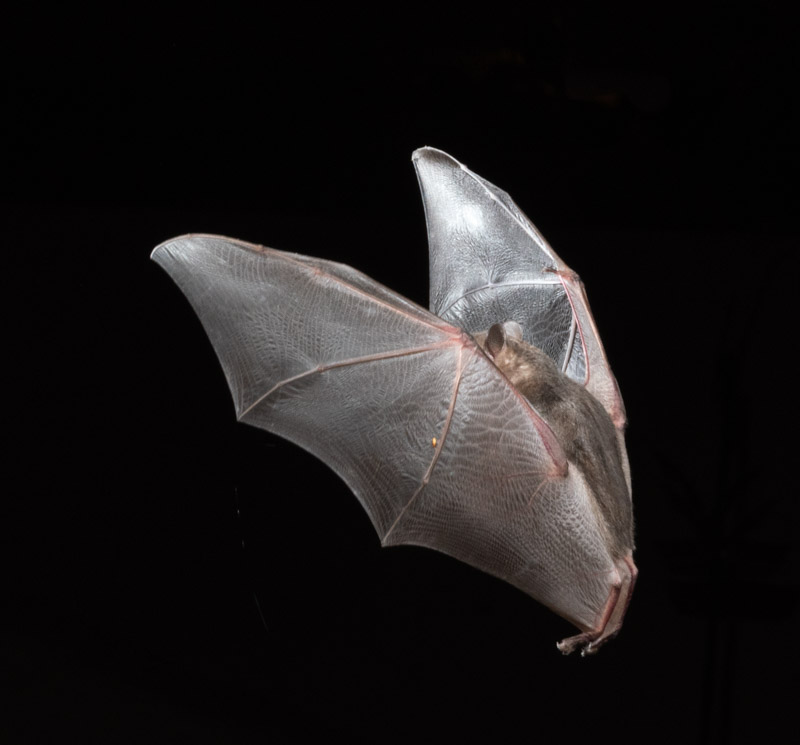
Here is another Lesser Long-nosed Bat approaching the feeder. As their name implies, these bats have long, narrow snouts which terminate in a small triangular nose-leaf. The nose-leaf found in some bat families is thought to serve some role in assisting with echolocation calls of the bats.
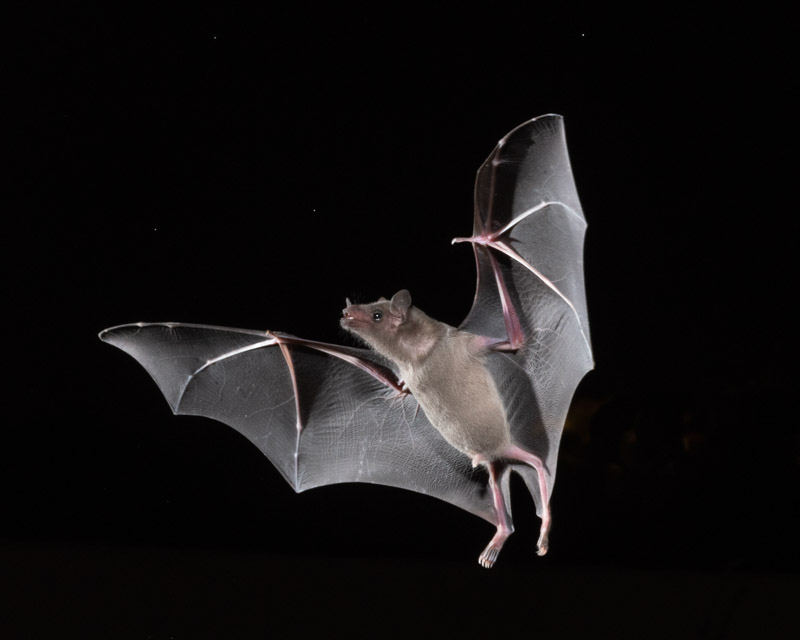
Lesser Long-nosed Bats live on nectar but they do need protein as well. They get their protein from the pollen of the flowers they feed on. The pollen rubs off of the flower when the bat is sticking it head deep inside the flower to reach the nectar. When the bats return to their roosts in caves (where the Lesser Long-nosed Bats spend their summers in Tucson), they will lick and eat all of the pollen they have collected on their fur. Currently, there are no native cacti or agave plants flowering in the Tucson area. This bat must have found a non-native cactus or agave that is now flowering.
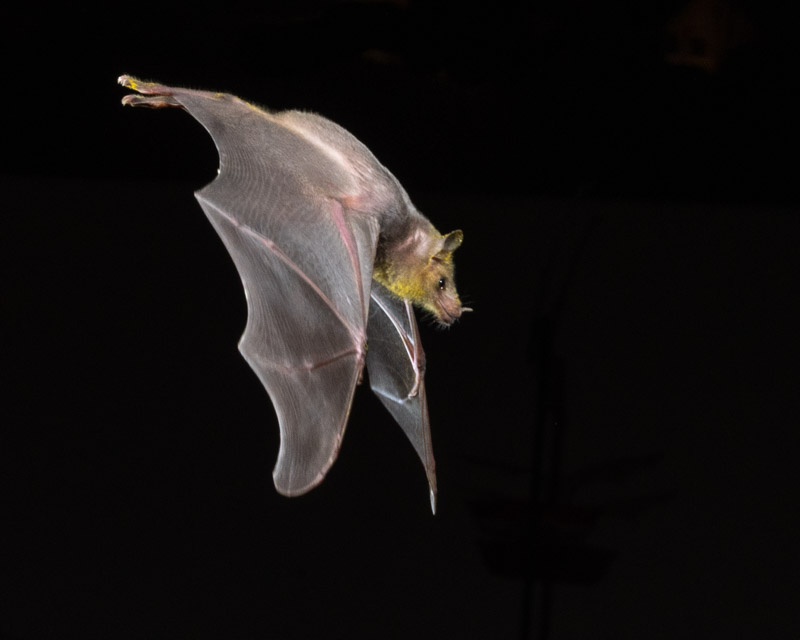
Here is another bat heading up to the feeders while covered in pollen. I’m pretty certain this is a different bat than the one above as it does not seem to have as much pollen on the top of its head and ears.
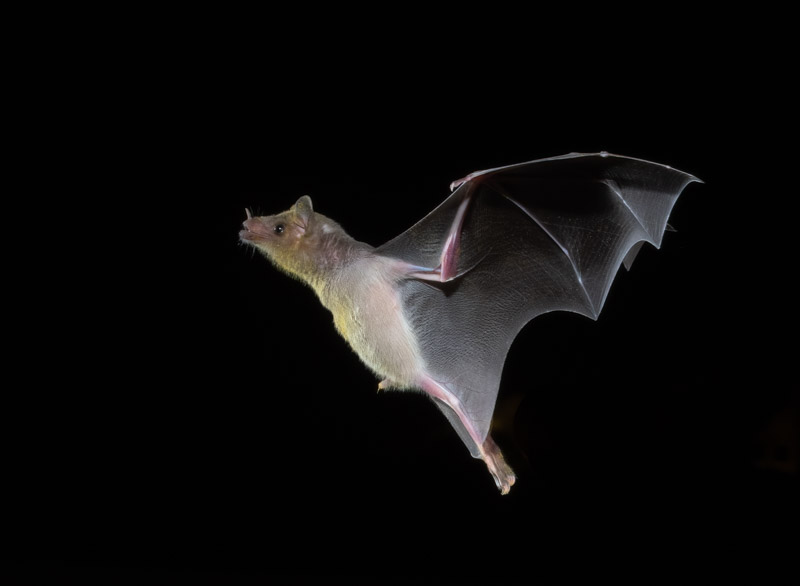
If you live in the Tucson area and have hummingbird feeders up, you may have seen the flurry of bats swarming your feeders. My camera was set up with the shutter open for five seconds in the dark. When a bat would fly over a laser beam, it triggered remote flashes that captured the image of the bat. The photo below is actually images of two bats who both flew in during a five second span. They didn’t fly in together even though that’s what appears in the image. They both have eyes on the feeders and are ready for a quick sip.
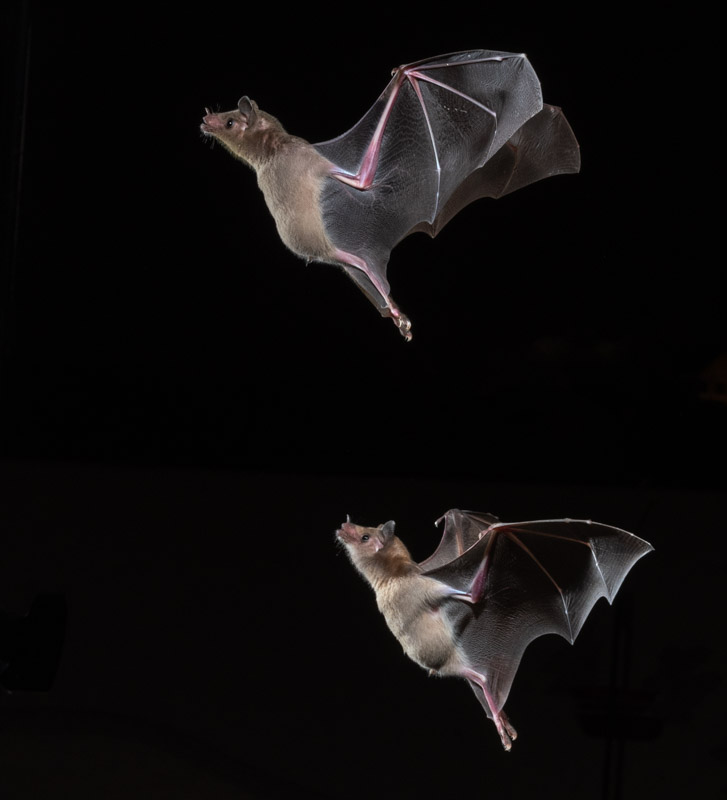
This ‘in-your-face’ image allows you to see some of this bat’s features: the triangular nose-leaf, the large ears, the teeth used in eating fruit, fur, its toes, and some detail of the wing membrane.
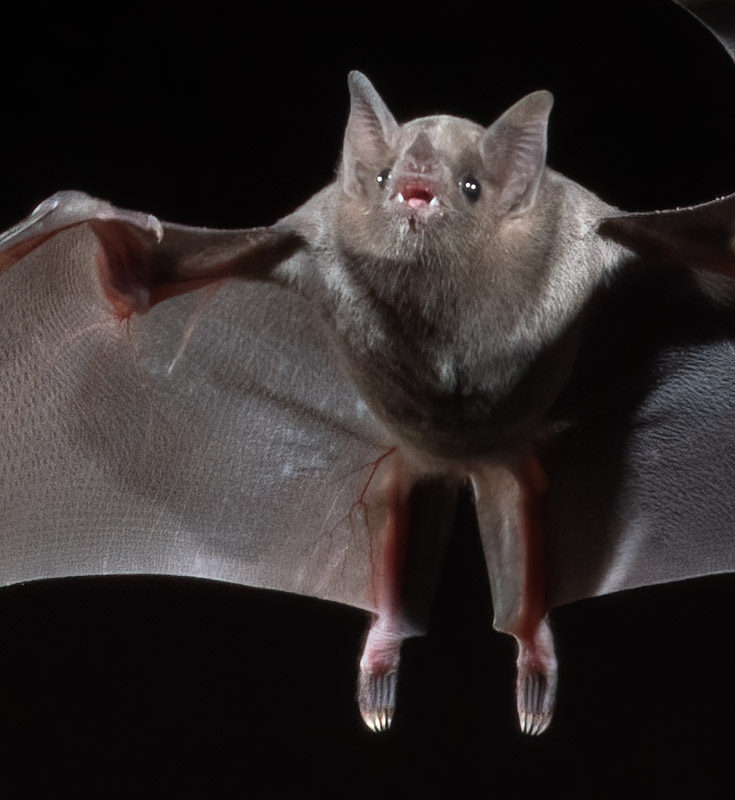
One final action shot for today: I like the look of anticipation on this bat and the shape and contour of its wings. Lesser Long-nosed Bats are only up to 3 inches long although their wingspan is 14 inches. They weigh under an ounce. For perspective, some household things that weigh the same include one pencil, or six sheets of paper, or a CD, or ten pennies. Because these bats migrate long distances following the flowering and fruiting cycles of the large desert cacti, they have very large wings plus an additional feature to aid in their flight. You can see that the membrane between this bat’s legs is split. It looks like the bat is wearing pants. Other bats have large membrane between their legs. That type of a tail membrane would cause more drag in the air making it more difficult to fly long distances. For Lesser Long-nosed Bats, there is no membrane between their legs allowing the bats to expend less energy when they migrate.
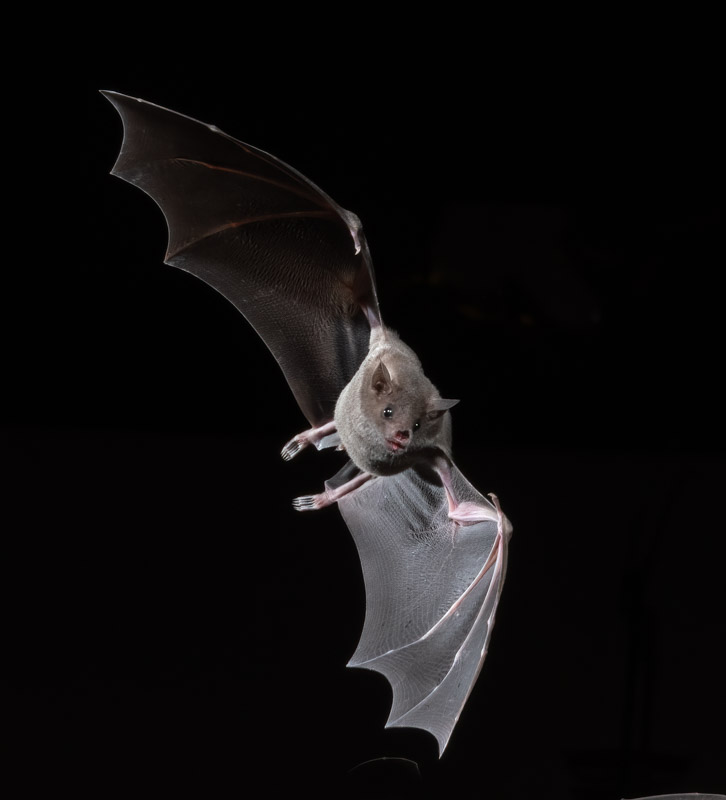
Bats are incredible animals and nectar feeding bats have a special place in the diversity of our desert wildlife. They are important pollinators of our large desert flora of agave, saguaro, cardon, organ-pipe cactus and others. If you drink tequila, be sure to thank these bats for making that possible. I’ll be sharing some more bat photos from a second night of shooting.
For more information on nectar-feeding bats and an ongoing study in southern Arizona, see: https://www.azgfd.com/wildlife/backyard-bats/
